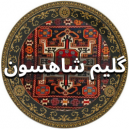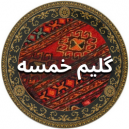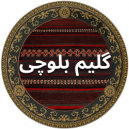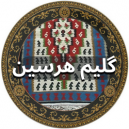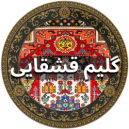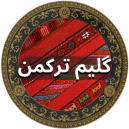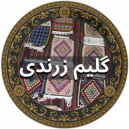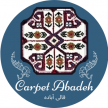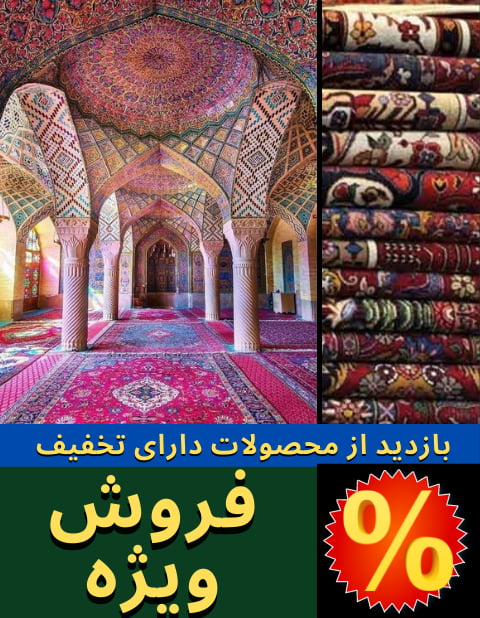- محصولات جدید NEW
-
آموزش
-
فروشگاه های فرش در هر استان
- فروشگاه های فرش آذربایجان شرقی
- فروشگاه های فرش آذربایجان غربی
- فروشگاه های فرش در استان اردبیل
- فروشگاه های فرش در استان اصفهان
- فروشگاه های فرش در استان البرز
- فروشگاه های فرش در استان ایلام
- فروشگاه های فرش در استان بوشهر
- فروشگاه های فرش در استان تهران
- فروشگاه های فرش در استان چهار محال بختیاری
- فروشگاه های فرش در استان خراسان جنوبی
- فروشگاه های فرش در استان خراسان رضوی
- فروشگاه های فرش در استان خراسان شمالی
- View more →
- آدرس ها و روش های اتباطی
- وبلاگ دفه زن
- روش ثبت نام برای ایجاد فروشگاه
- ورود به مدیریت فروشگاه
- حراج SALE
- تبلیغات در خارج از ایران
- دسته بندی بر اساس محل بافت
- اخبار ویژه
- فروشگاه رایگان خود را در دفه زن ایحاد کنید Apply now
- محصولات پر فروش TOP
kilim
Kilim or Palas is one of the types of handmade textiles and coverings woven from silk, goat hair, sheep wool, or other domestic animal wool. Traditionally, kilims are often used to cover the floor and walls, or as saddlecloths for pack animals, but nowadays they are also purchased as modern coverings for urban homes. Kilim weaving is unlike carpet weaving and does not have any pile. This art thrives mostly in tribal and rural areas, but there are enthusiasts in urban areas who learn and practice kilim weaving through available education.
Raw Materials of Kilim:
Kilim yarn has been woven from wool yarn since ancient times, but nowadays synthetic yarns such as acrylic and Chromey are also used. However, ideally, natural wool should be used.
Origin of Kilim:
This art dates back to 2500 years before Christ and the oldest kilim belonging to this era has been discovered among the artifacts of ancient Egypt.
Regions of Kilim Weaving:
In addition to Iran, this art is also produced in Middle Eastern countries such as China, India, Pakistan, Afghanistan, Turkmenistan, and others. In Iran, besides the tribes, this product exists in provinces such as Khorasan, Fars, Kurdistan, Baluchistan, Yazd, Azerbaijan, Kermanshah, and others.
Design in Kilim:
Kilim designs are often formed by geometric shapes such as squares, diamonds, and hexagons, but artists also create designs based on their creativity, which may include patterns of animals and nature.
Stages of Kilim Weaving:
Requires a carpet frame to be set up with a base of kilim.
Warping and weaving the carpet warp are done.
Weaving starts with woolen yarns and patterns are woven.
Types of Kilims:
Each tribe and ethnic group in different regions of Iran has its specific kilim. Below, you will become familiar with the various types of these products produced by various Iranian ethnic groups.
1 - Shahsavan:
One of the famous Iranian tribes is Shahsavan, whose most important woven kilims are very delicate and are known as Sumakh and locally referred to as Varni. The designs of these handwoven kilims mostly consist of animal motifs such as deer, horses, and birds and are decorated with geometric shapes. They are made with coarse and dry wool, and their pattern diversity is such that it is rare to find two pieces woven by this tribe that are similar. It is worth mentioning that the best traditional saddlecloths in our country are produced by the Shahsavan tribe in the form of kilim weaving.
To see Shahsavan kilim in the online market of handmade carpets, you can click here.
2 - Lori:
Lur ethnic groups in Iran produce high-quality kilims, among which the large "Khurjin" stands out for storing household items, and their best product is considered. They reinforce its edges with a method called carpet weaving. These handwoven kilims are recognized by their specific geometric and animal motifs, and their colors are usually green, black, blue, and white.
To see Lori Kilim in the online market of handmade carpets, you can click here.
3 - Khamsa:
This type of kilim belongs to the five tribes of Shiraz, and the name Khamsa refers to the mixing of these five tribes in this province. Among them, two tribes speak Arabic, and two tribes speak Turkish, and one of them, known as Basari, they speaks Persian. Their weaving is Sumak, known as Deh Bid. The patterns of these products mostly have a dark background on which diagonal star shapes and interlocking diamond shapes are woven.
To see Khamsa kilim in the online market of handmade carpets, you can click here.
4 - Baluchi:
The designs and colors of these kilims are inspired by the climatic conditions of the Baluchi tribes. Their kilims have various patterns and colors in each row. The handwoven products of these tribes use dark colors such as liver, dark blue, camel, and brown, and of course, bright colors such as green, red, and yellow are also characteristic of them.
To see Baluchi kilim in the online market of handmade carpets, you can click here.
5 - Harsin:
This region in Kermanshah province is one of the most important centers of kilim weaving in Iran; perhaps the most important feature of this type of underlay is that the artist weaves it with the help of his taste and taste according to the environmental conditions. Their border and background patterns are fine and intricate in a way that space cannot be found between the patterns. Artists in this area use goat wool for its resistance to mildew, and in its weaving, colors such as navy blue, green, white, red, and pink are usually used.
To see Harsin Kilim in the online market of handmade carpets, you can click here.
6 - Qashqai:
The variety of patterns and colors in the weavings of this tribe is attributed to either being woven in the settlement area or during migration, where the abundance of natural landscapes around the artist brings about this diversity. The main patterns of this kilim are geometric and animal motifs, such as eight-pointed stars, octagonal shapes, and images of goats, peacocks, and deer.
To see Qashqai kilim in the online market of handmade carpets, you can click here.
7 - Sanandaj (Seneh):
This product, which is specific to Sanandaj, is produced with great delicacy and quality, and its main designs are patterns known as "Harati" with bush patterns and oblique lines. Sanandaj kilim has a very beautiful and famous design with a turquoise motif in the middle and a colorful background, and delicate bush patterns are also visible in it.
To see Sanandaj kilim in the online market of handmade carpets, you can click here.
8 - Turkmen:
Its most important feature is its color, where bright red takes on the main role; in this kilim, firm and lightweight, designs are classified based on a main pattern called "Gol" and are woven in six and eight-sided forms. In the Turkmen model, each flower represents a family.
To see Turkmen kilim in the online market of handmade carpets, you can click here.
9 - Zarandi:
They weave this type of kilim with a pile, and it is woven by the tribes of Turk and Shahsavan. The special features of Zarandi kilim are its thinness, length, and of course, its durability. The most common patterns used in this kilim are floral and plant designs, such as meshed almond and turquoise motifs.
To see Zarandi kilim in the online market of handmade carpets, you can click here.
10 - Afshari:
This design has a natural or beige background with many stars patterned on it; in Afshari kilim, star-shaped flowers appear in interlocking almond shapes, which are diagonally arranged next to each other. This kilim has a narrow border. The size and shape in these kilims are mostly small and rectangular. The primary materials used in these kilims are thread yarns and coarse woolen wefts. The weaving method in these kilims is usually warp-faced and in some weavings, paired hook-connected.
To see Afshari kilim in the online market of handmade carpets, you can click here.
View all the products offered in the Dafezan handwoven carpet market
- To view all the carpets available in the market categorized based on the (location of the handmade carpet store, (click here).
- To view all the available carpets in the market categorized based on (types and styles of carpets), click (here).
- To view all available carpets in the market categorized based on (region of handmade carpet weaving), click (here).
- To view all available carpets in the market categorized based on (carpet prices), click (here).
- To view all available carpets in the market categorized based on (carpet shape), click (here).
- To view all available carpets in the market categorized based on (carpet size), click (here).
- To view all available carpets in the market categorized based on their (age and carpet condition), click (here).
- To explore all available carpets in the market categorized by (carpet color), click (here).
- to check all the carpets in the market that are categorized according to the type of( carpet material) used to produce the carpet, Click ( here ).
- قیمت
- منطقه بافت
- محل فروشگاه
- سبک فرش
- نقشه فرش
- سایز
- رنگ
- سن فرش
- شکل
- 0میلیون
- 110میلیون
میلیون – میلیون
-
No items found matching the search criteria
-
No items found matching the search criteria
-
No items found matching the search criteria
-
No items found matching the search criteria
-
No items found matching the search criteria
-
No items found matching the search criteria
-
No items found matching the search criteria
-
No items found matching the search criteria
Sidebar Subcategories Sidebar Subcategories
بازار انلاین فرش دستباف دفه زن
در باره ما
شرکت ما با بیش از 65 سال سابفه در زمینه خرید و فروش و صادرات فرش دستباف از 5 سال قبل فعالیت خود را بر روی بازار های انلاین متمرکز نمود و در همین راستا بازار دفه زن شکل گرفته است.
هدف این بازار ایجاد ارتباط مستقیم بین تولید کنندگان و فروشندگان فرش دستباف ایرانی از یک سو و خریداران داخل ایران و خریداران خارج از ایران و فروشگاه های فرش دستباف در خارج از ایران از سوی دیگر می باشد


